How to grow moss as a grass alternative
A Lush and Low-Maintenance Grass Alternative for Your Garden
In the quest for a verdant and vibrant garden, many gardeners overlook one of nature’s most underappreciated treasures: moss. Often regarded as a nuisance or a sign of neglect, moss actually offers a plethora of benefits and can be cultivated as a beautiful and sustainable alternative to traditional grass lawns. In this comprehensive guide, we’ll explore the wonders of moss and share everything you need to know to successfully grow and maintain a moss garden.
Understanding Moss
Mosses are primitive, non-vascular plants that belong to the Bryophyte family. Unlike grass, which requires soil, sunlight, and regular watering to thrive, mosses are incredibly adaptable and can grow in a variety of conditions, including shade, moisture, and poor soil. Their ability to absorb water and nutrients directly from the air makes them an ideal choice for low-maintenance landscaping.
Benefits of Moss Gardens
Environmental Benefits: Mosses play a vital role in ecosystem health by filtering pollutants from the air and water, stabilizing soil erosion, and providing habitat for insects and microorganisms. Unlike grass lawns, which require fertilizers, pesticides, and excessive watering, moss gardens are eco-friendly and sustainable.
Aesthetic Appeal: Mosses come in a variety of colors, textures, and growth habits, ranging from velvety green carpets to intricate cushion-like forms. Their lush, carpet-like appearance adds a touch of natural beauty to any garden, creating a serene and tranquil atmosphere.

Low Maintenance: Perhaps the most appealing aspect of moss gardens is their minimal maintenance requirements. Once established, mosses require little to no watering, mowing, or fertilizing, making them an ideal choice for busy gardeners or those seeking a low-maintenance landscaping solution.
Choosing the Right Moss Species
When it comes to replacing grass with moss, several types of moss are popular due to their adaptability, aesthetics, and ease of care. Here are some common types of moss used as alternatives to traditional grass lawns:
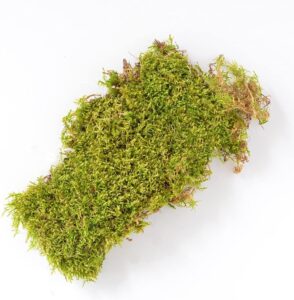
Sheet Moss
Sheet Moss (Hypnum spp.): Sheet moss is one of the most versatile and widely used moss species in landscaping. It forms dense, carpet-like mats of vibrant green foliage and thrives in shady, moist environments. Sheet moss is often used to create lush groundcovers in woodland gardens, shady lawns, and rock gardens.

Cushion Moss
Cushion Moss (Leucobryum spp.): Cushion moss, also known as white moss or pin cushion moss, forms compact, cushion-like mounds of soft, velvety foliage. It is prized for its distinctive texture and ability to thrive in a variety of soil types and light conditions. Cushion moss is commonly used to add visual interest and texture to rock gardens, borders, and woodland landscapes.
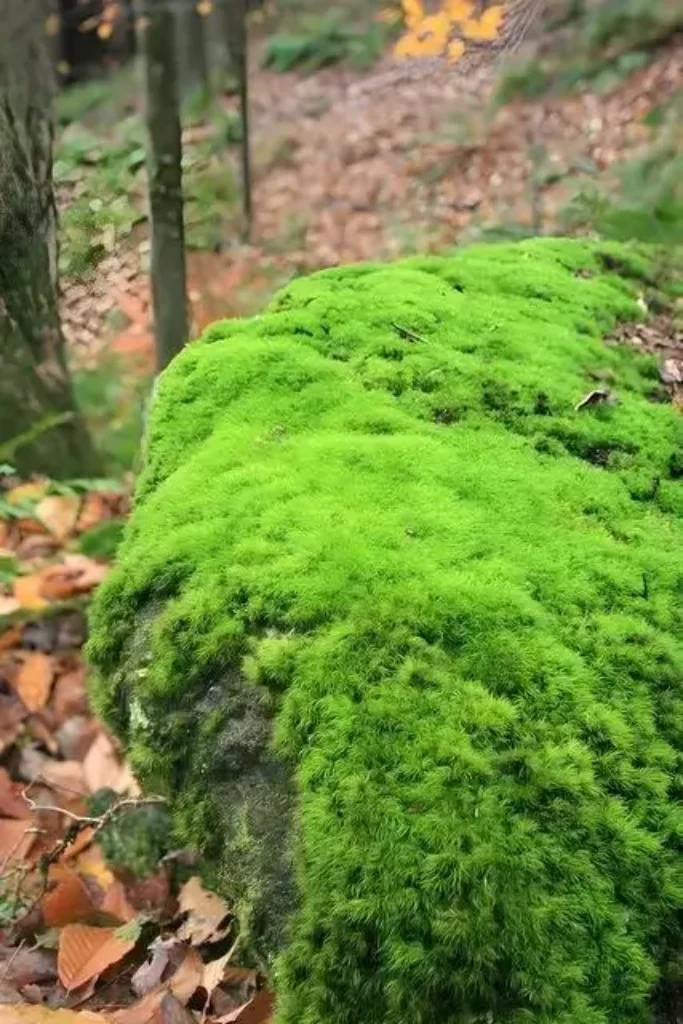
Haircap Moss
Haircap Moss (Polytrichum spp.): Haircap moss is a tall, upright moss species characterized by its long, cylindrical stems and distinctive “haircap” structures. It prefers moist, acidic soil and partial shade and is often used to create vertical accents in damp areas such as bog gardens, stream banks, and rain gardens
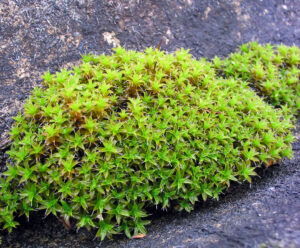
Star Moss
Star Moss (Tortula ruralis): Star moss, also known as starry feather moss, is a delicate and intricate moss species with star-shaped foliage that resembles tiny green flowers. It thrives in moist, shady environments and is commonly used as a groundcover in woodland gardens, terrariums, and shady lawns.
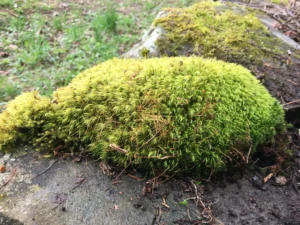
Rock Cap Moss
Rock Cap Moss (Dicranum spp.): Rock cap moss is a low-growing moss species that forms dense, cushion-like mats of deep green foliage. It is often found growing on rocks, boulders, and stone walls in moist, shady environments. Rock cap moss is prized for its resilience and ability to withstand foot traffic, making it an ideal choice for pathways, stepping stones, and other high-traffic areas.
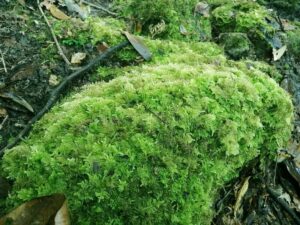
Fern Moss
Fern Moss (Thuidium spp.): Fern moss, also known as log moss or feather moss, is a feathery moss species with fern-like foliage that cascades gracefully over rocks, logs, and other surfaces. It prefers moist, shady conditions and is commonly used to add texture and movement to shady gardens, water features, and woodland landscapes.
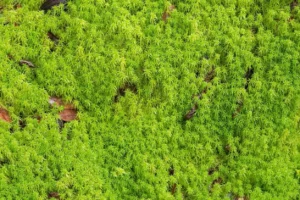
Sphagnum Moss
Sphagnum Moss (Sphagnum spp.): Sphagnum moss is a unique moss species that forms dense, spongy mats of fibrous foliage. It is prized for its ability to retain moisture and improve soil structure, making it an excellent choice for moisture-loving plants, bog gardens, and wetland habitats.
Each type of moss has its own unique characteristics and growing requirements, so be sure to choose the species that best suits your garden’s specific conditions and aesthetic preferences.
Establishing Your Moss Garden
- Site Selection: Choose a location in your garden that receives partial to full shade, as mosses thrive in low-light conditions. Remove any existing grass or weeds and prepare the soil by loosening compacted areas and removing debris.
- Preparation: If necessary, amend the soil with organic matter such as compost or peat moss to improve moisture retention and fertility. Water the area thoroughly to ensure the soil is evenly moist but not waterlogged.
- Installation: Planting moss can be done using several methods, including transplanting moss fragments or spreading moss slurry (a mixture of moss fragments and water) over the prepared soil. Press the moss firmly into the soil to ensure good contact and water lightly to settle.for more on this check this video link out below:
How to grow a Moss lawn
Care and Maintenance
- Watering: Keep the moss garden consistently moist during the establishment phase, watering as needed to prevent the soil from drying out. Once established, mosses are drought-tolerant and require minimal watering.
- Weed Control: Monitor the moss garden for weeds, especially during the establishment phase, and remove any unwanted vegetation by hand. Avoid using herbicides or chemical weed killers, as they can harm mosses and disrupt the delicate ecosystem.
- Grooming: Periodically groom the moss garden by removing debris, fallen leaves, and other organic matter that can accumulate on the surface. Use a gentle rake or leaf blower to remove debris without disturbing the moss.
- Fertilization: Mosses do not require fertilization, as they obtain nutrients from the air and decaying organic matter. Avoid using chemical fertilizers, as they can harm mosses and promote weed growth.
Embracing the Beauty of Moss
Moss gardens offer a sustainable, low-maintenance alternative to traditional grass lawns, with numerous environmental, aesthetic, and practical benefits. By understanding the unique characteristics of mosses and following simple cultivation techniques, gardeners can create lush and verdant landscapes that enhance the beauty of their outdoor spaces while promoting biodiversity and ecological health. So why not embrace the beauty of moss and transform your garden into a serene oasis of green?
Hope you liked the post, Prime Broccoli out! 🙂

